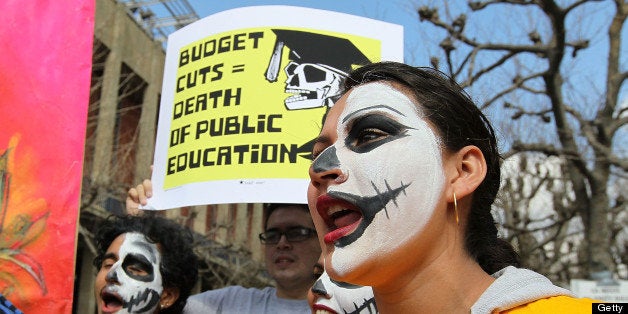
Tuition for in-state students at public colleges rose faster than nonresident rates, according to a new report from the U.S. Department of Education released this week.
Between the 2010-11 and 2012-13 academic years, resident tuition rates rose for students at public universities by 6.7 percent, while out-of-state tuition increased by 4.1 percent, the report found.
The difference between the growth of in-state and out-of-state tuition can be attributed to declining support from state legislatures, which a New York Federal Reserve study found accelerates tuition increases at public universities.
Tuition rates at public colleges are highly discounted for in-state residents, whose educations have been subsidized by state appropriations. Nonresidents typically pay the full cost of tuition. The goal of such policies has been to create a student body at public universities that consists largely of people from that state.
However, states are still not spending as much on educating college students as they were in 2008, leading some universities to seek out a larger number of out-of-state students to make up budget gaps. The result is that more out-of-state residents take the spaces that would otherwise go to poor and minority students.
The report also found that the cost for room and board had increased at a slightly faster rate at public schools (2.6 percent) than at private universities (2 percent). However, the average cost of living on campus, $8,652, was still higher than the average cost of tuition at public colleges, $7,526. The cost of room and board at private schools remains comparable, but falls far short of the average tuition of $24,256. The figures for room and board do not include the cost of books and supplies, which is on average between $1,200 and $1,700.

